Whitehot Magazine
October 2025
"The Best Art In The World"
"The Best Art In The World"
October 2025
Anthony Haden-Guest Looks Back at Besancon
How a camp he was interned in as a child has morphed
into an unusual and sometimes unnerving art museum
By ANTHONY HADEN-GUEST August 23, 2025
The invitation to Martin Liu’s birthday party was intriguing.
I have long known Liu, an immigration lawyer and savvy art collector but what got my attention, Liu not being an old style jet setter, was that it was going to be in the south of France. Just where, I asked? “Besancon,” he said.
Besancon. Yikes. That invitation demanded a Yes.
Back story. Just before the outbreak of World War II my mother and infant me were staying in Saint Briac, on the coast of Brittany in North-West France, in Les Essarts, the house of Margaret Forbes, a Boston brahmin, with two of whose daughters she had become friendly skiing, and who would become my godmother. My mother, who was Russian Jewish, was already working with the group which would shortly become MI9, a secret department of the British War Office, set up to help Allied fighters both to escape from camps and those trapped behind enemy lines. She dismissed all suggestions that she return to the UK.
When the war broke out in 1939, the Forbeses departed, the house, leaving my mother in charge. After the French surrender in 1940 the country split into Occupied and Vichy France, which was collaborating with Germany, and the Germans took over Les Essarts, along with other large houses on the coast, to prepare for the invasion of the UK. Which, of course, didn’t happen. My mother became friendly with some of the Germans, mentioned that Winston Churchill had stayed there.
What followed has been documented. The German general came and sat alongside mama as she was watching soldiers play football on a lawn. He told her that one of the footballers was more important than he.
“What do you mean?” my mother asked. “You’re a general. He’s a feld webel.” German for sergeant.
“He is Gestapo,” the general said.
Soon after this the general told her that they had learned she was not American as she had claimed but British. ”The Gestapo is coming for you this morning,” he said. “But you will not be here. I am sending you to an internment camp at Dinan. Get your child and his nanny ready. You will be leaving at 5.30.” Dinan is inland in Brittany but our stay there was brief. We were transferred to a camp in Le Mans. So on to Vichy France.
Once settled there she joined the Pat O’Leary Line, a famous escape network, but was caught, so she and baby moi went to an internment camp in, yes, Besancon. Eighteen months later TB broke out in the camp and the Red Cross organised for my mother and I to be taken to Paris. En route she sneaked us away from our escorts, and a journey by road and rail followed, once in a carriage with SS officers for company, and with much crawling over stony fields, I wearing a string harness. It ended with my mama slipping us under a wire and we made it back to London by way of Portugal.
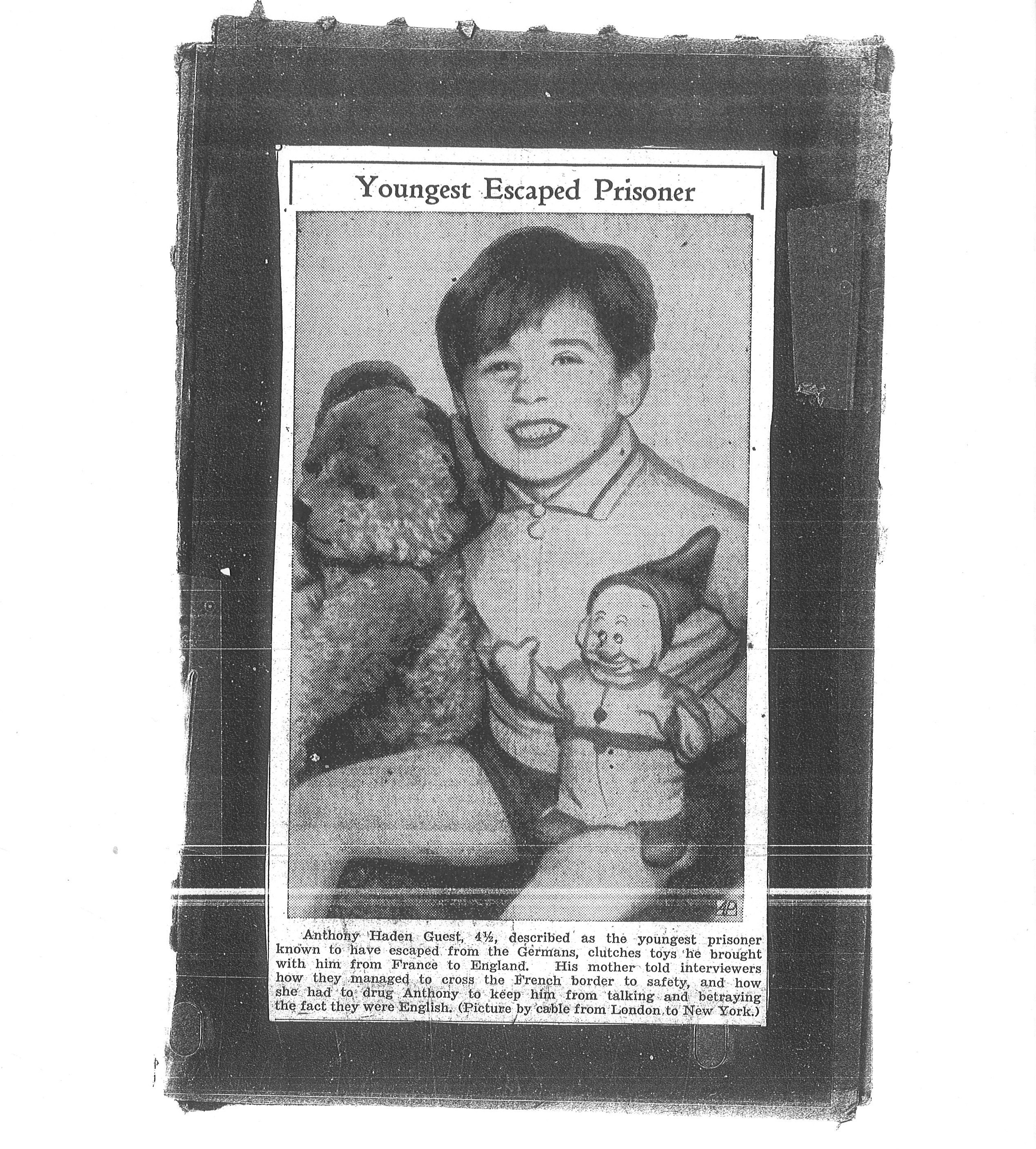 Young Anthony Haden-Guest in Time Magazine.
Young Anthony Haden-Guest in Time Magazine.
A story published on May 4, 1942, in Time magazine begins: “Don’t forget I speak English” said Anthony Haden-Guest. He was having a fine time in London last week. He got under a table and pinched a lady reporter’s leg. Anthony, 4 ½, was conceded to be the youngest person to escape from Occupied France.
The story described the escape, ending: Ten minutes afterwards, some other refugees following them through the wire were shot dead. I was sent the other photograph below from Canada but don’t know where it was published. Incidentally my mama’s incautious reference to Churchill hadn’t been forgotten. Upon their departure the Germans burned down Les Essarts.
So, yes, it was high time for a return visit to Besancon. The Martin Liu party was at the Chateau de Mailly, a resonant pile belonging to Liu’s college room mate, Robert Smit, and his sister, Marion, with who he remains on close terms, and he has been visiting the family there regularly ever since. There were about thirty of us at Liu’s 67th. birthday dinner, an art worldy group, such as Eleanor Heartney, the critic/curator, the writer, and the writers Lisa Gornick and Christopher Sweet, and two of whom, Michel Collet, an art history professor, and Valentine Verhaeghe, a conceptual artist and performer, to whom he is married, happen to live in Besancon. Verhaeghe said she would set up things for me when I got there.
The following day I went on to Besancon. My single childhood memory of the place had been of looking up at a two tier bunk bed, but I was hoping that just being there might engender a rush of others. I found that the camp for Brits had been housed in the Besancon Citadelle, a 17th century fortress and highly regarded piece of military architecture, which saw use during World War II first to confine and sometimes execute resistance fighters, then to keep German soldiers as prisoners of war. Valentine Verhaeghe and her husband had all the info needed and I went on a walkabout but I had zero flashes of recognition.
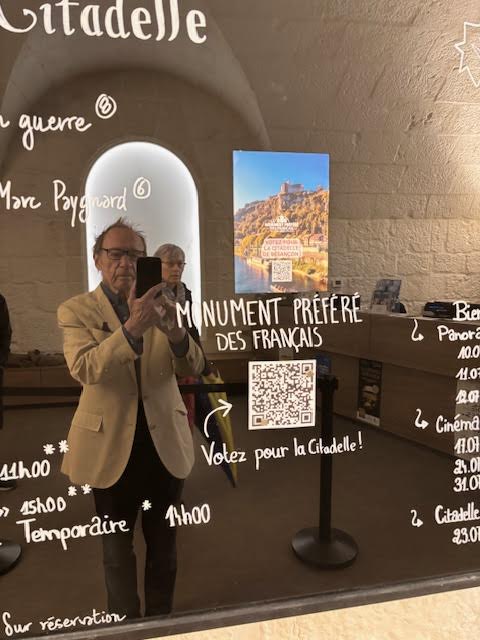 AHG at the Citadelle
AHG at the Citadelle
My time was hardly a wasted though. The Citadelle now houses The Museum of Resistance and Deportation of Besancon. The creation of this museum was proposed by a former deportee, Denise Lorach, in 1964 and it opened on July 17, 1971. Three years ago it closed for renovation and reopened on September 8, 2023.
Objects, documents and images on show include the open diaries of prisoners, the shrapnel –pierced helmet of one fighter and the final letter of another. Also reports, such as one on the Royal Air Force bombing of the Peugeot plants, and flipbooks, in one of which Hitler, doing the Nazi salute with a cheery grin, alongside Dr Goebbels, and such Objects of the Resistance as a toothbrush, a rosary and a hand-made belt.
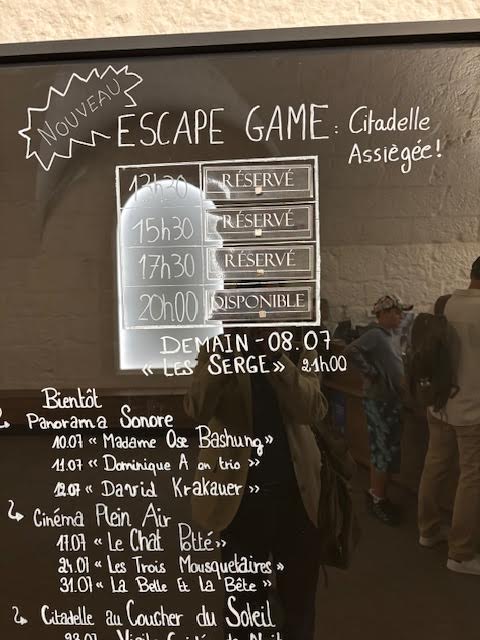
The collection includes a number of loans from elsewhere, such great many paintings, drawings and statuettes created secretly in the Reich's prisons and concentration camps and there is also a great deal of material that would have fitted neatly into Carnevale, the show of art with a fairground aesthetic which artist Joe Coleman curated for Deitch Projects. Such as the goofy face, with a text which translates as Laughter is a Combat Sport and the droll installation, Museum Figures. There is a centre of theater arts in Besancon and one exhibit, actually called Carneval, Transgression in the street, deals with Saltimbanques …Street Performers, a wide-ranging term embracing an oft-despised life on the fringe.
Most on view though is way darker. The nine white artificial legs look jokey framed together but must have belonged to prisoners and those unsmiling young men, marching past, arms shielding their heads in one photograph, may be four of the ninety-eight resistance fighters executed in the Citadelle. Another photograph just shows a massive mound of empty shoes. Clearly it was felt no explanation of what had happened to the wearers was necessary.
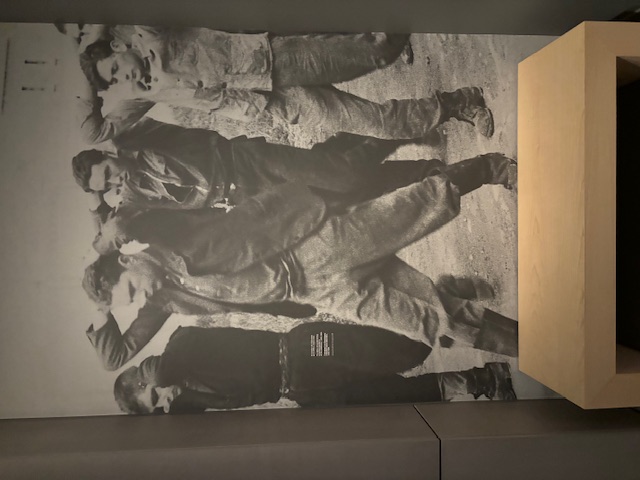 Resistance.
Resistance.
A document is entitled: Adolf Hitler: Constructing the image of a leader and a poster headed Liberateurs? carries photos of nine alleged criminals, including de Gaulle. There’s a report on the Royal Air Force bombing of the Peugeot plants, and a teddybear which belonged to Jeannine Lejard, who died aged 17 on April 15 1945 in Ravensbruck, the largest concentration camp for women in Germany .
There was also a show of battered and multiply labelled suitcases, entitled Valises! Stories of an object in war, which will be up until December 14, notice of an Escape Game museum-goers can play, called Prepare yourself to defend the fortress, and leaflets which carry a photograph of the Citadelle perched on a hilltop announce a poll for The Monument Preferred by the French, and plead VOTE FOR THE CITADELLE DE BESANCON. My visit to this museum of a disturbing past prompts a question. Just what should we be collecting right now for a museum presenting goings on worldwide today in our whatever future. WM
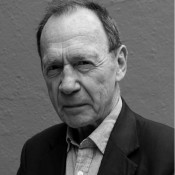
Anthony Haden-Guest
Anthony Haden-Guest (born 2 February 1937) is a British writer, reporter, cartoonist, art critic, poet, and socialite who lives in New York City and London. He is a frequent contributor to major magazines and has had several books published including TRUE COLORS: The Real Life of the Art World and The Last Party, Studio 54, Disco and the Culture of the Night.
view all articles from this author









